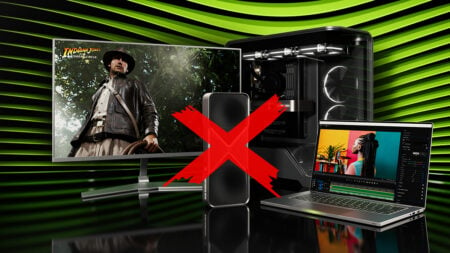Skip To...
Nvidia has been reigning supreme in the high-end GPU market for a long time, which has been coupled with their relatively new AI-powered upscaling and frame generation technology, called DLSS 3.0. But it seems the new kid on the block, AMD’s FSR 3, might be giving Nvidia’s DLSS a run for its money and then some. If Nvidia doesn’t stay on its toes and make some massive changes, Team Green’s market lead will be a thing of the past.
Nvidia’s DLSS Explained, & Why It Matters

For those who aren’t up to speed, let’s first explain what Nvidia’s DLSS actually is, which is an acronym for deep learning supersampling. The technology started out way back in 2019 with version 1.0. But as time went on, Nvidia kept honing in on its new software implementation and continued to improve on every front. With DLSS 3.0, Nvidia graphics cards can achieve far more performance while minimizing the workload on the hardware itself.
Games that support DLSS 3.0 can be upscaled to 4k while natively running at only 1440p or even 1080p. This improves performance by leaps and bounds when compared to running the same titles on 4k natively. But here’s where things get really interesting because AI not only upscales a game but also makes and inserts new frames in between natively generated frames by the hardware. This can result in improvements in framerates from 2 to 3 times the native baseline, which is remarkable. Not only does this cut power consumption, it does so while delivering better numbers.
Pushing the limits further, DLSS 3.5 is also available, but that focuses more on raytracing and isn’t exactly groundbreaking yet.
Nvidia Went Anti-Consumer With DLSS & RTX 40XX Series Cards

Although this is a software feature with no hardware dependencies, in a “business first, customer second” move, Nvidia made DLSS 3.0 available only on the latest series of its GPUs. So if you own any graphics card older than the 40XX series, you’re out of luck on the DLSS side of things.
This is also part of the reason why the 40XX series was a marginal improvement over the 30XX series, and this software feature was used to boost sales, making sure people don’t skip the generation entirely. On top of that, the 40XX series was a lot more expensive too, which resulted in quite a lot of consumer backlash because Nvidia was essentially charging for DLSS. To put things into perspective, the top-of-the-line Nvidia RTX 4090 launched at an eye-watering $1600.
AMD’s FSR 3 Comes To The Rescue
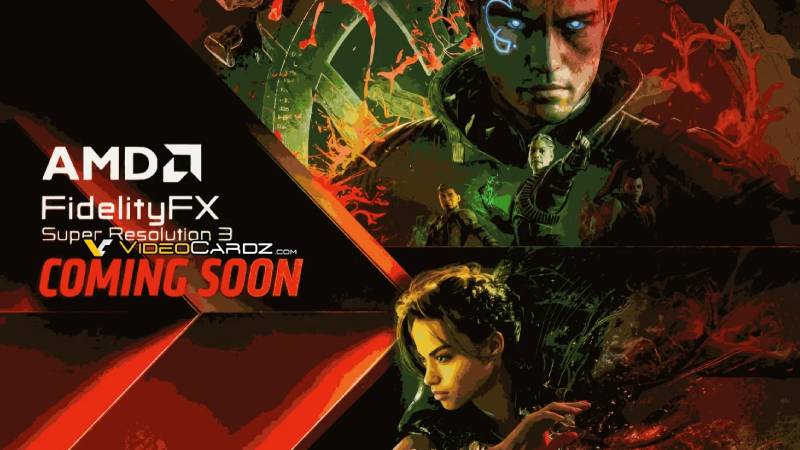
Team Red’s FSR 3 offers the same feature set as Team Green’s DLSS and is called Fluid Motion Frames, but isn’t as limited as Nvidia’s offering. FSR 3 comes with similar AI resolution upscaling with familiar performance numbers, and with the latest version, frame generation is also coming to AMD cards. Users of FSR 3 can expect double to triple their normal FPS using the same hardware, and when paired with AntiLag+, the input delay should get a lot more tolerable as well.
But here’s where AMD went the extra mile to ensure its spot in the PC gaming industry. FSR 3 will work on the latest AMD GPUs as well as a lot of older graphics cards. But making matters much more interesting, FSR 3 will work on every other modern GPU. Yes, this includes AMD’s competitors, Intel and Nvidia as well. And in an extremely unexpected move, even people with older Nvidia cards will now finally be able to experience something like DLSS 3.0 without having to pay the entry price of the RTX 40XX cards. This essentially means that AMD is offering better software support to older Nvidia users than Nvidia itself, Yikes!
That by itself is extremely impressive and should result in PC gamers flocking to the new offering, but there’s even more.
AMD Does What Nvidia Couldn’t – The Game-Changing Implications
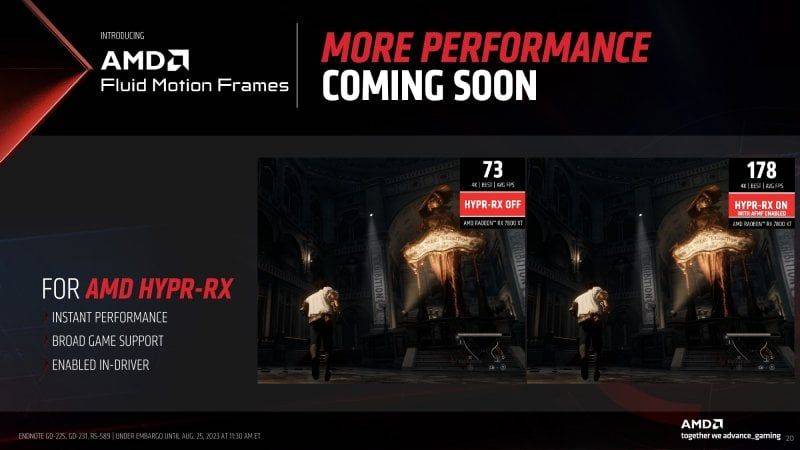
For Nvidia’s DLSS 3.0 to work in any specific game, Nvidia needs to partner up with the game’s developers or publishers, and then work with them to get the aforementioned features into the title. Then those features only work for Nvidia users, allowing their gaming experience to be superior to any console or other PC. As of the time of writing, Nvidia has partnered up with around 50-60 games, all of which now support DLSS 3.0 and a few even support version 3.5.
But AMD has taken a very different approach to this problem, instead of partnering with developers or publishers, AMD has created a separate software utility called Hypr-RX that allows gamers to use FSR. And it doesn’t just work on 50-60 games like their counterpart, it actually works with pretty much every single DirectX 11 and DirectX 12 title. This umbrella encompasses a vast number of games and so, should impact the gaming experience of countless PC users.
Even so, AMD is partnering up with many games to support FSR 3 natively, and to expand this native support, Epic Games is working with AMD on a new FSR 3 plug-in for Unreal Engine 5. Once this effort comes to fruition, it will let this native support grow as more and more developers adopt the next-generation engine. The titles already confirmed to come with FSR 3 are Immortals of Aveum and Forspoken’s DLC.
Continuing the “open-armed” approach, AMD is also bringing FSR 3, with all its bells and whistles, to consoles as well. For now, AMD has only confirmed that FSR 3 will make it to
Nvidia Should Be Worried
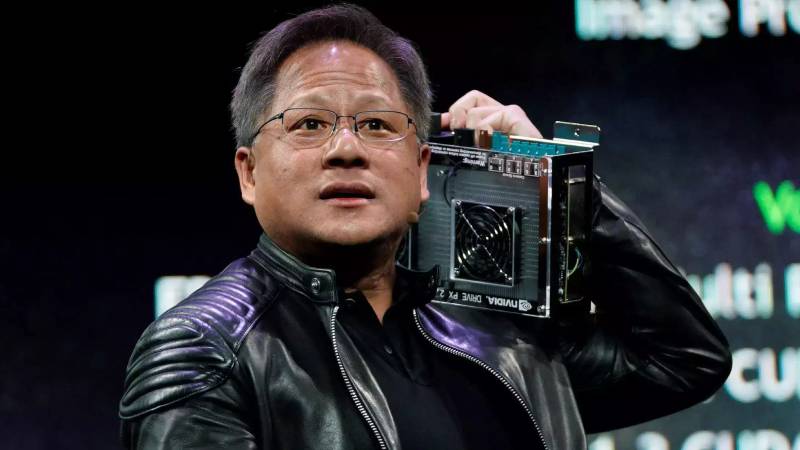
Nvidia had originally planned on holding these software features back behind a hardware limitation, allowing only those who splurge for the latest and greatest products from the company. But that strategy will not work anymore, and if Nvidia wants to retain its customers in the long run, it will have to at least equal what AMD is offering.
The original plan was to boost sales of the RTX 40XX series, which was already a very hard sell for most of the community, and the introduction of FSR 3 makes that purchase decision even more unlikely. So what should Nvidia do?
For one, Nvidia will have to make sure more of its hardware supports DLSS 3.0 and also ensure that its latest hardware is priced more aggressively compared to the past. At the same time, improvements from one generation to the next will have to be appreciable bumps instead of tiny enhancements that barely have any practical implications.
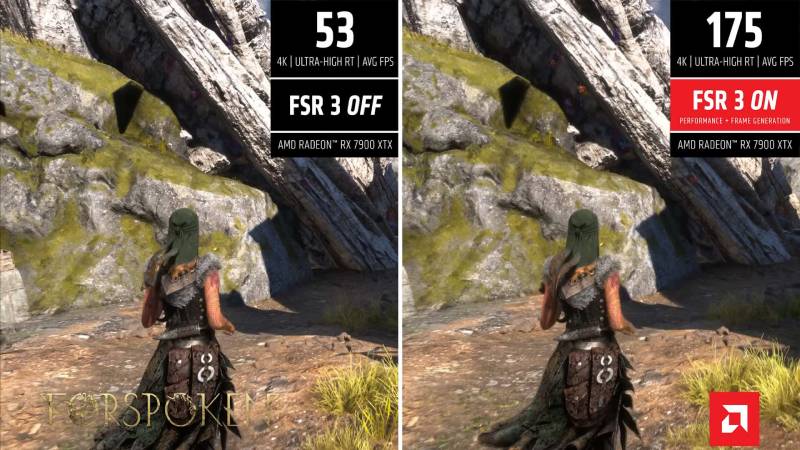
It remains to be seen how well AMD’s FSR 3 pans out, and how well it works compared to DLSS. Since there are more factors at play now than ever before, the real question is how well the performance is using the Hypr-RS software on every DirectX 11 and DirectX 12 title. Even so, the ball is now in Nvidia’s court, and its decisions with the next generation of GPUs will define how well it competes with AMD.
It may seem that AMD has an unprecedented lead, but it is not that simple. AMD still isn’t able to compete with Nvidia when it comes to raw power. Not only do AMD GPUs fall short in this regard, but they are not as power efficient either. So even with FSR 3, when it comes to the bleeding edge of graphical power, Nvidia still has a significant lead over everyone else.
If you want to try out FSR 3 for yourself on your PC, unfortunately, you will have to wait a little. Although partnered games like the aforementioned Immortals of Aveum and Forspoken will get FSR 3 within the next few weeks or months, the DirectX implementation through AMD’s software will take a bit longer to come out. According to AMD’s best estimates, Hypr-RX should make it to the wild in Q1 2024.
In any case, the competition is finally heating up once again, and it will be interesting to see how Nvidia steps up to the challenge to retain its sizable lead. Meanwhile, Intel continues to struggle to make a dent in the highly competitive space even with their XeSS, which intended to compete with DLSS 3.0 and FSR 3 but unfortunately went nowhere.




